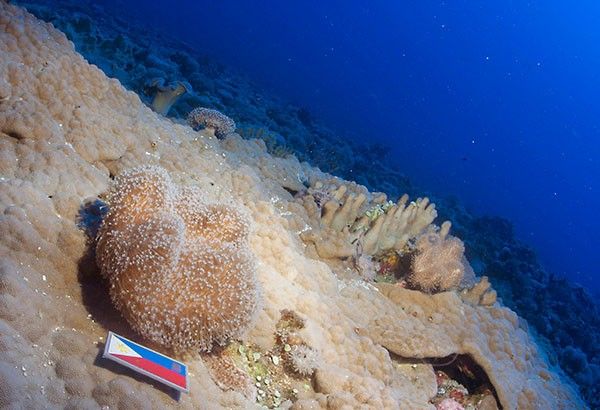Philippines won’t recognize Chinese names for Benham Rise features

“We will not accept it, that’s why we used the word object and protest,” Foreign Affairs Secretary Alan Peter Cayetano said.
MANILA, Philippines — The Philippines will not recognize foreign names for undersea features in the Philippine Rise (Benham Rise) regardless of what the International Hydrographic Organization (IHO) would say, Foreign Affairs Secretary Alan Peter Cayetano said yesterday.
He also said the Philippines has already informed China of its position.
“We will not accept it, that’s why we used the word object and protest,” Cayetano said.
The IHO is the international body that documents and compiles names of underwater features.
He said the Philippines is preparing to give Filipino names to undersea features in the Philippine Rise and will submit its list to IHO.
“We have communicated to China that we understand for them it is purely scientific. But it is not a good time to have Chinese names in the features because we have a live dispute in the South China Sea,” Cayetano added.
Jay Batongbacal, director of the University of the Philippines Institute for Maritime Affairs and Law of the Sea, said the IHO approved the names proposed by China last year.
He said three of the features were reported to have been “discovered” during a 2004 survey by the Li Shiguang Hao of the China Navy Hydrographic Office, which submitted the names for consideration by the IHO in 2014.
As this developed, a battalion of Marines was deployed in Cagayan Valley to help secure the country’s northern maritime border.
The deployment by the Northern Luzon Command of the Marine Battalion Landing Team-8 (MBLT-8) to Port Irene in Sta. Ana in Cagayan Valley came amid security concerns at Panatag Shoal off Zambales and in the Bashi Channel, a sea lane between Taiwan and the Philippines’ northernmost island province of Batanes.
Bashi Channel connects the South China Sea, the East China Sea and the Pacific Ocean, where the 13-million hectare Philippine Rise – an underwater plateau – is situated.
“We have vast maritime areas in the northern frontier and partner islands not only in Batanes island group. We have to have the Marines here not only to promote and ensure safety of life at sea but also to manifest our strong claims in the partner islands in the northern frontier,” Lt. Gen. Emmanuel Salamat, Nolcom commander said.
The deployment of Marines to Northern Luzon started during the term of now retired Nolcom commander Lt. Gen. Romeo Tanalgo. He had ordered the landing of soldiers and the planting of the Philippine flag on Mavulis, an unoccupied islet under the administrative control of Itbayat island in Batanes.
Salamat said plans are afoot for the building of a fishermen’s enclave on Mavulis islet that would be guarded by Marines.
The Marines – mostly from Western Mindanao – arrived yesterday in Port Irene on a Navy landing dock ship.
“Nolcom not only covers the geographic regions of Ilocos, Cagayan Valley, Central Luzon and the Cordillera Administrative Region (CAR) but also the vast maritime areas of eastern and western seaboards,” Salamat said.
He said Nolcom is also deploying air and naval assets to conduct patrols in the area.
“We are privileged to have additional platforms that include air and sea assets for the conduct of regular maritime patrol in the Philippine Rise as per marching order of the President for us to secure our maritime interests,” Salamat said.
A militant fishers group, meanwhile, wants the Department of Environment and Natural Resources (DENR) to explain what happened to its P500-million funds for marine biodiversity research in the Philippine Rise.
Fisherfolk group Pambansang Lakas ng Kilusang Mamamalakaya ng Pilipinas (Pamalakaya) raised the question amid the controversy sparked by the government’s issuance of research and surveying permits to China and other countries in the 13-million square kilometer Philippine Rise.
President Duterte later revoked the permits.
The funds supposedly came from the DENR’s National Greening Program (NGP). Pamalakaya quoted experts as saying P300 million would be sufficient to cover research activities in the area.
“But the DENR has yet to release to the public any result of the research or if the budget was spent properly,” Pamalakaya said.
“The DENR has been keeping silent on the issue of Philippine Rise despite the government pronouncement that Filipino scientists could not afford to conduct research due to lack of funding,” it said.
“The budget allotted to the agency is enough for research because according to scientists, it will only take at least P300 million to do adequate research on Philippine Rise,” the group added.
“With that big budget allotted to the agency, who is to say we still need foreign countries like the China, US and Japan to conduct research in our own backyard?” Pamalakaya chairman Fernando Hicap pointed out.
“The DENR owes the public an explanation on what happened to the P500-million research fund. The public deserves to know the truth because the issue of Philippine Rise is a matter of our sovereign rights and utilization of our marine resources,” Pamalakaya said. – Jaime Laude, Ding Cervantes
Related video:
- Latest
- Trending



























